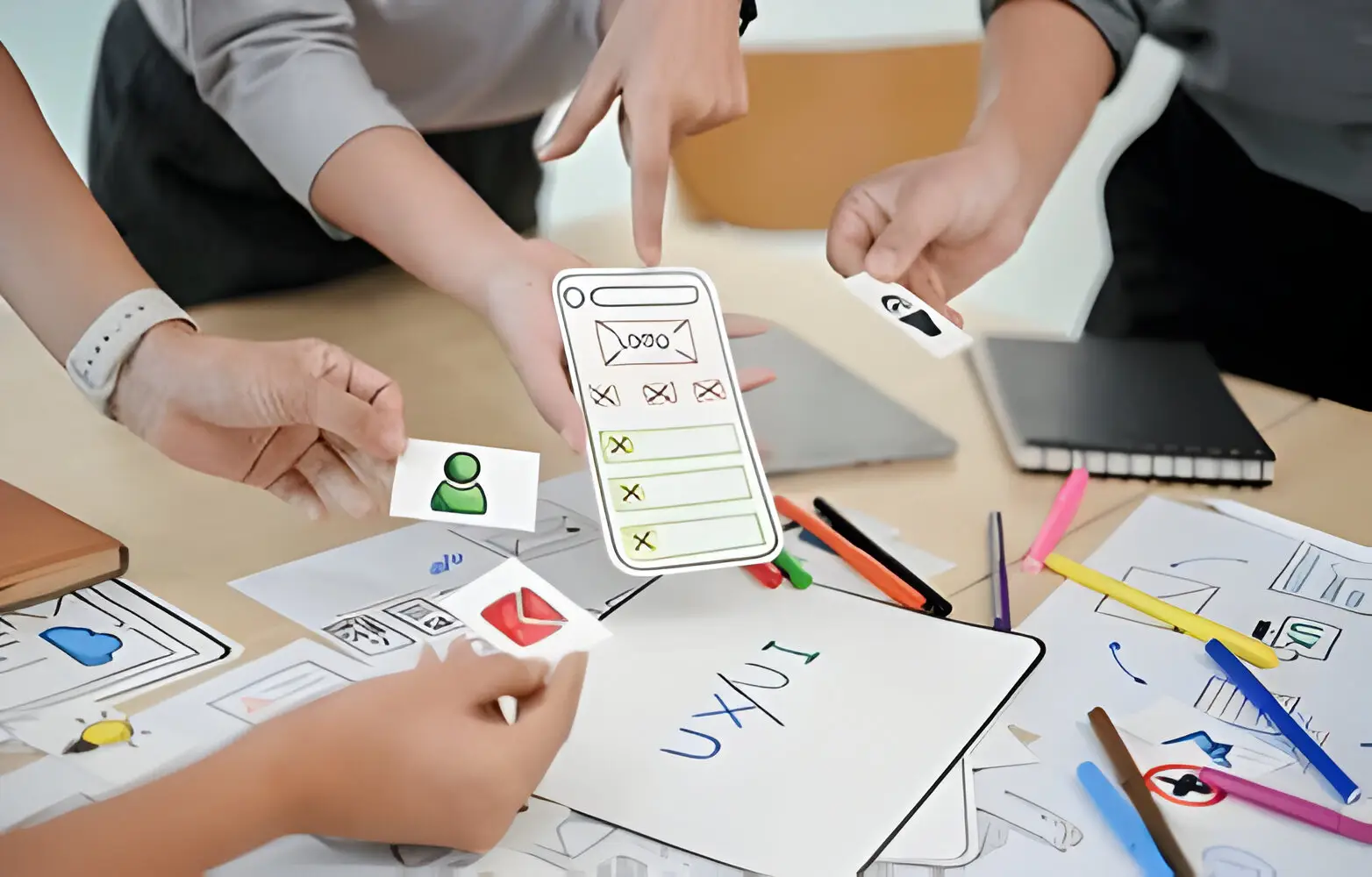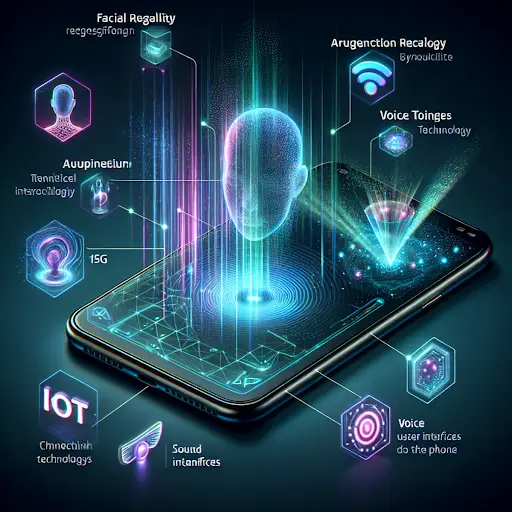
The Ultimate Guide to UI UX Design: Elevate Your App Development Process
By, Amy S
- 24 May, 2024
- 1.6k Views
- 0 Comment
In the app development process, UI (User Interface) and UX (User Experience) design play pivotal roles. UI design focuses on how users interact with your app, striving to make these interactions easy, enjoyable, and effective. UX design, on the other hand, aims to create a system that provides the best possible experience for users, turning them into loyal customers.
Discover how incorporating effective UI/UX design can elevate your mobile app and drive its success. Well-designed interfaces and thoughtful user experiences can set your app apart in a competitive market, making it not only functional but delightful to use.
By prioritizing these elements during app design and development, you’re setting the stage for long-term success.
If you’re looking for a partner to help you achieve this vision, consider collaborating with the leading mobile app development company in Edmonton. Their expertise in building custom mobile & software development services can ensure powerful, safe, and secure business apps that greatly enhance user experiences. Request a free consultation today to explore how they can assist you in creating an exceptional app.
The Importance of a Well-Designed Mobile App
Creating a successful mobile app in today’s competitive market goes beyond just functionality. A well-designed mobile app user interface (UI) and exceptional user experience (UX) design are crucial in capturing users’ attention and ensuring sustained engagement.
Why UI/UX Design is Important
- User Retention and Satisfaction
A well-designed UI/UX can significantly improve user retention and satisfaction. Users are more likely to return to an app that is easy to use, visually appealing, and intuitive. This creates a positive impression, leading to higher user loyalty and potentially more recommendations.
- Competitive Advantage
In a crowded market, having an app that stands out can make a big difference. Apps with the best UX design not only attract users but also keep them engaged. A seamless experience can be a key differentiator that sets your app apart from competitors.
Enhancing User Interactions: The Role of UI Design
The main purpose of UI design is to make interactions easy and enjoyable for users. Some key elements include:
- Visual Consistency: Using consistent colors, fonts, and button styles helps users understand how to navigate the app.
- Interactive Elements: Buttons, icons, and other interactive features should be clear and responsive.
- Feedback Mechanisms: Providing immediate feedback to users (e.g., loading animations, success messages) keeps them informed and engaged.
Creating Great Experiences: The Essence of UX Design
While UI focuses on aesthetics and interaction, UX design for apps aims to create an overall great experience. This involves:
- Intuitive Navigation: Making sure users can easily find what they’re looking for through logical organization of information.
- User-Centric Research: Understanding user needs through methods like surveys, interviews, and usability testing.
- Emotional Engagement: Designing experiences that connect with users on an emotional level, making them feel valued and understood.
Considering these elements during the mobile app UX design process leads to products that not only meet functional requirements but also exceed user expectations.
“By focusing on both UI and UX aspects, you craft an app that provides value through ease of use while delivering a compelling experience that keeps users coming back.”
Key Components for Crafting an Exceptional UI/UX
Creating a great mobile app is challenging. Designing a user interface (UI) and user experience (UX) that users love and find easy to use involves several important elements. These elements make sure the design is consistent, easy to understand, and interesting.
1. Information Architecture: Organizing Your App’s Structure for Intuitive Navigation
Importance of Hierarchical Flow
- Structuring your information in a way that makes sense to users is crucial.
- A clear hierarchy guides users naturally through the app, reducing confusion and improving satisfaction.
Navigational Patterns and Menus
- Implementing consistent navigational patterns such as tab bars, drawers, or breadcrumbs helps users find what they need quickly.
- Menus should be easy to access and understand, ensuring that users can navigate through the app effortlessly.
2. Creating Engaging Interactions through Innovative UI Design
Use of Animations and Microinteractions
- Animations can bring your app to life, making interactions feel smooth and interesting.
- Microinteractions—small visual cues like button animations or loading spinners—enhance user feedback and improve the overall experience.
Gestural Controls for Touch-Based Interactions
- Using gestures like swipes, pinches, or taps can create a more immersive experience.
- Platform-specific gestures are essential; for example, iOS uses swipe actions differently than Android.
Ensuring Responsive UI Across Different Devices and Screen Sizes
- A responsive design ensures that your app looks great on any device, whether it’s a smartphone, tablet, or phablet.
- Adapting layouts dynamically to fit various screen sizes guarantees a seamless user experience across all devices.
3. Wireframing: Transforming Ideas into Visual Blueprints
Benefits of Wireframing in the Early Stages of Design
- Wireframes act as visual blueprints that outline the basic structure of your app.
- They allow designers to plan the layout and flow without getting distracted by detailed design elements early on.
Tools for Creating Wireframes
- Popular tools include Balsamiq, Sketch, Adobe XD, and Figma.
- These tools provide features like drag-and-drop interfaces and pre-made templates to streamline the wireframing process.
4. The Power of Visual Design in Evoking Emotions and Enhancing Usability
Color Palettes and Typography Choices
- Color palettes can evoke specific emotions and set the tone for your app.
- Typography choices impact readability and overall aesthetic appeal; using legible fonts enhances user comfort.
Consistent Use of Branding Elements
- Consistency in branding elements like logos, colors, and fonts builds brand recognition.
- Users are more likely to trust an app that maintains visual consistency throughout their journey.
Case Study on How Visual Design Impacted User Engagement in a Real-World App
“A case study involving Spotify demonstrated how changes in visual design significantly boosted user engagement. By refining their color palette and typography choices, Spotify managed to create a more immersive experience that resonated with their audience.”
Understanding these key components helps designers create mobile apps that not only meet but exceed user expectations. Each element plays a vital role in creating an intuitive, engaging, and visually appealing product.
Deliverables in the UI/UX Design Process
UI/UX design deliverables are essential for communicating a designer’s vision and validating their ideas. These artifacts help ensure that the final product aligns with user expectations and business goals. Let’s explore some of the key deliverables in the UI/UX design process.
1. Mood Boards: Setting the Right Visual Direction for Your App
Mood boards are a collection of visual elements that convey the style, tone, and overall aesthetic of your app. They are crucial for establishing a cohesive visual direction.
- Curating Inspirational Images and Color Schemes
Mood boards typically include images, color palettes, typography styles, and textures that align with the app’s branding and target audience.
By assembling these elements, designers can effectively communicate their vision to stakeholders and team members.
- Tools for Creating Mood Boards
Popular tools such as Pinterest, Canva, and Adobe Spark make it easy to create mood boards that inspire and guide the design process.
These tools offer a variety of templates and customization options to suit different project needs.
2. Translating Concepts into Compelling Visual Designs
Visual designs transform abstract concepts into tangible representations of the app’s interface. This step involves creating detailed mockups that showcase the app’s look and feel.
- Creating High-Fidelity Mockups Based on Wireframes
High-fidelity mockups provide a realistic preview of the final product by including detailed design elements like imagery, typography, and iconography.
Tools like Sketch, Figma, and Adobe XD are commonly used to create these mockups.
- Collaboration with Developers for Feasible Implementation
Effective collaboration between designers and developers ensures that the visual designs are technically feasible.
Regular feedback loops help identify potential issues early, making it easier to adjust designs before development begins.
3. Gaining a Competitive Edge through User-Centric Research and Analysis
User-centric research is vital for understanding user needs, preferences, and pain points. This research informs design decisions and helps create an app that resonates with its audience.
- Conducting Usability Testing Sessions with Target Users
Usability testing involves observing real users as they interact with your app prototype.
Insights gained from these sessions highlight areas where users struggle or experience friction, guiding iterative improvements.
- Leveraging Analytics Data to Make Informed Design Decisions
Analytics data provides quantitative insights into user behavior patterns within your app.
Tools like Google Analytics and Mixpanel track user interactions, helping you identify high-impact areas for optimization.
Each of these deliverables plays a critical role in shaping an effective UI/UX design strategy. By meticulously planning and executing these phases, designers can create mobile apps that not only meet but exceed user expectations.
Conclusion
Prioritizing UI/UX design in your mobile app development strategy is crucial for achieving app success. A well-designed user interface and a smooth user experience can greatly influence how users engage with your app, turning first-time visitors into loyal customers.
Applying the key principles and best practices discussed throughout this guide will help you create outstanding user experiences:
- Use conventional elements to maintain familiarity.
- Ensure consistency across various design elements.
- Employ both UI and UX designers to balance aesthetics and functionality.
- Focus on creating an interactive and engaging app.
Remember, UI and UX design are interconnected. Both require careful thought to deliver a unified product that not only meets user needs but also delights them.
Elevate your app development process by integrating effective UI/UX design strategies. This approach not only enhances user satisfaction but also sets your app apart in a crowded market, building brand credibility and driving success.
Ready to discuss your project idea?
Category
- Android (12)
- Artificial Intelligence (49)
- Blockchain (10)
- Cloud Solutions (2)
- Cyber Security (3)
- Cybersecurity (8)
- Digital Transformation (74)
- Industry News (13)
- Infographics (10)
- iOS (4)
- Mobile App Development (99)
- Software (7)
- Uncategorized (44)
- Web development (15)
- Workflow Automation (4)
All Tag
Archives
- December 2025
- November 2025
- October 2025
- September 2025
- August 2025
- July 2025
- June 2025
- May 2025
- April 2025
- March 2025
- February 2025
- January 2025
- October 2024
- September 2024
- July 2024
- June 2024
- May 2024
- April 2024
- February 2024
- January 2024
- December 2023
- November 2023
- October 2023
- September 2023
- July 2023
- June 2023
- May 2023
- March 2023
- December 2022
- November 2022
- October 2022
- April 2022
- March 2021
- February 2021
- January 2021
- December 2020
- November 2020
- October 2020
- September 2020
- August 2020
- July 2020
- June 2020

